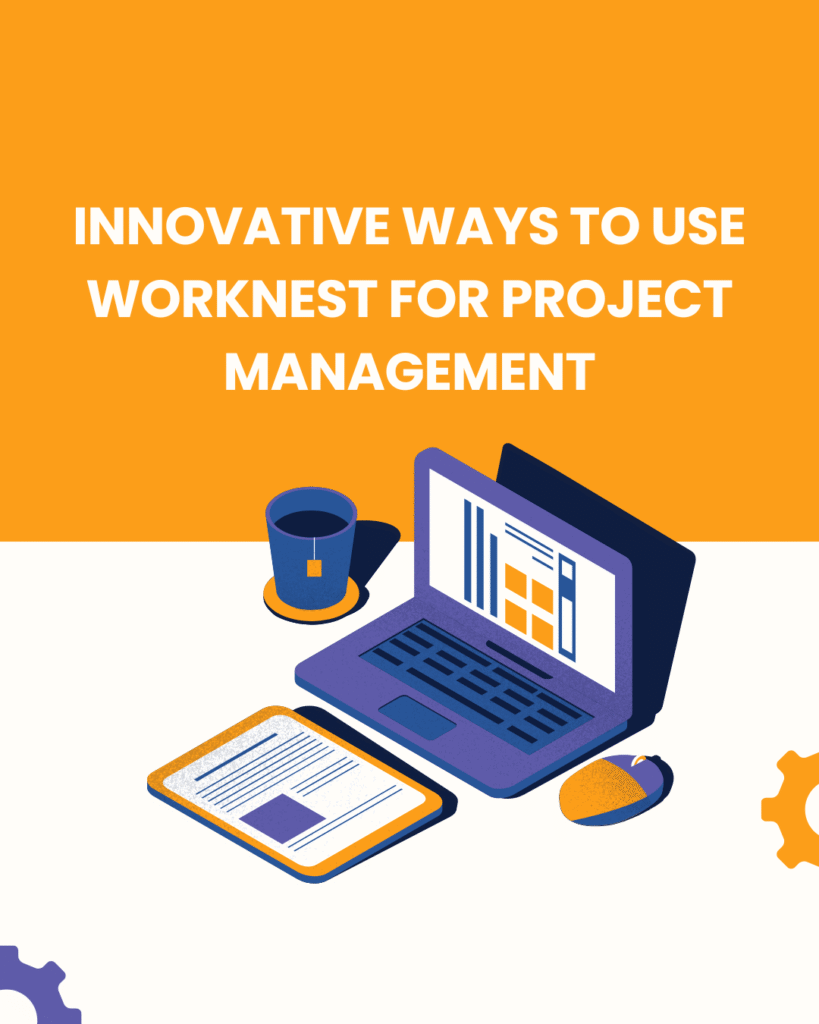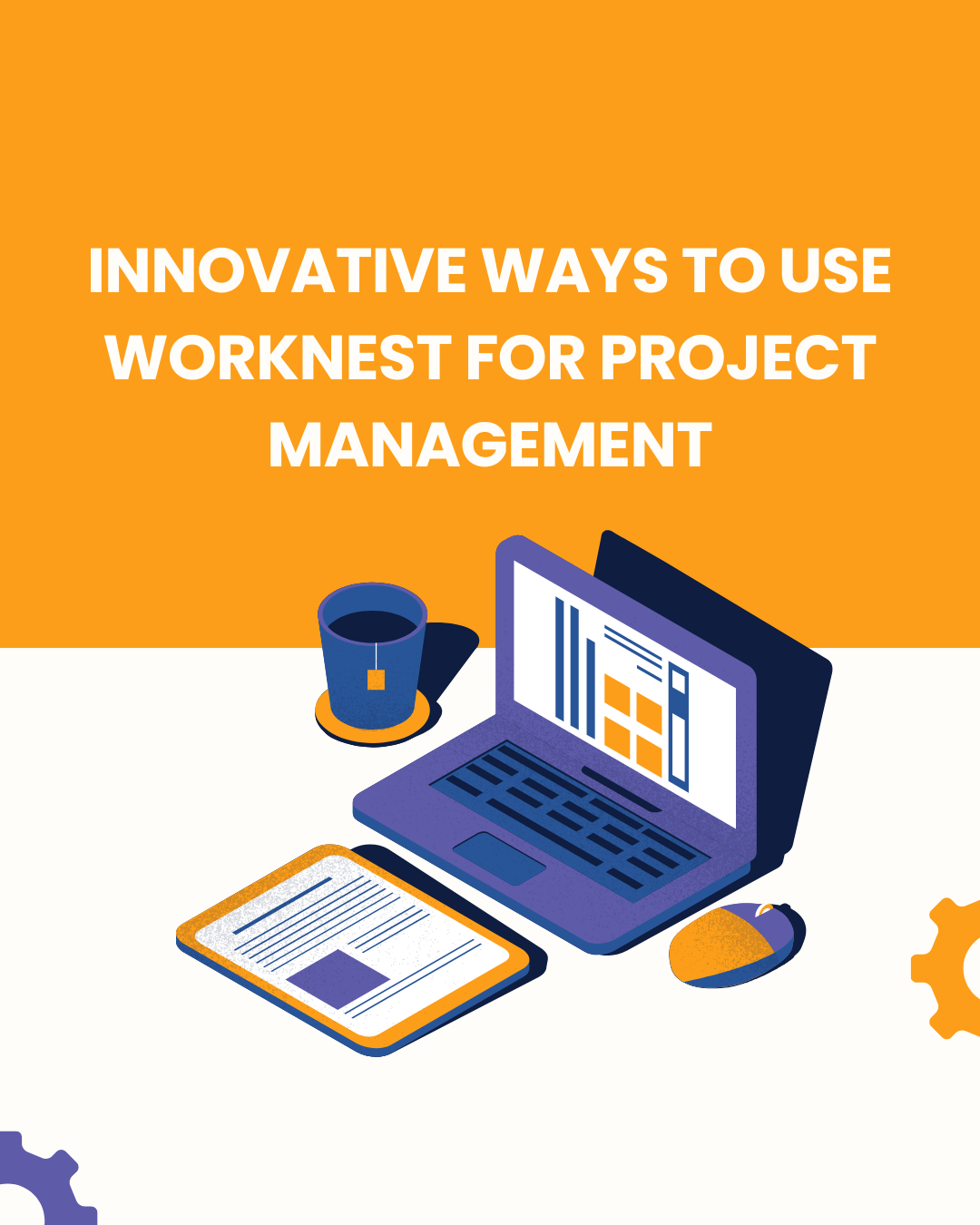Innovative Ways to Use Worknest for Project Management
In today’s fast-paced business environment, efficient project management is more crucial than ever. Teams need flexible, collaborative, and intuitive platforms to streamline workflows and meet deadlines. Enter Worknest — a powerful tool that transforms how teams manage projects by blending productivity, communication, and collaboration into one seamless environment.Innovative Ways to Use Worknest for Project Management
Whether you’re managing a small startup’s first project or overseeing multiple large-scale initiatives, Worknest offers innovative features that can elevate your project management game. In this comprehensive blog post, we’ll explore creative and practical ways to harness Worknest for all your project management needs.
Table of Contents
- Collaborative Document Editing and Version Control
- Using Worknest for Agile and Scrum Methodologies
- Introduction to Worknest and Its Project Management Potential
- Setting Up Your Project Workspace on Worknest
- Task Management: Breaking Down Projects into Manageable Steps
- Real-Time Communication and Video Conferencing
- Integrating Worknest with Other Productivity Tools
- Tracking Progress with Visual Dashboards and Reports
- Automating Workflows and Notifications
- Managing Remote and Hybrid Teams with Worknest
- Resource Allocation and Time Management
- Risk Management and Issue Tracking in Worknest
- Client Collaboration and Stakeholder Engagement
- Enhancing Creativity and Brainstorming Sessions
- Continuous Learning and Skill Development Within Projects
- Best Practices for Data Security and Privacy in Worknest
- Case Studies: Companies Successfully Using Worknest for Project Management
- Tips for Getting Your Team Onboard with Worknest
- Common Challenges and How to Overcome Them
- The Future of Project Management with Worknest
1. Introduction to Worknest and Its Project Management Potential
Worknest is designed to be a comprehensive work platform that brings together communication, collaboration, and productivity in one place. Unlike traditional project management tools that focus solely on task tracking, Worknest integrates messaging, file sharing, scheduling, and analytics, making it ideal for dynamic project environments.
The platform’s flexibility allows teams to customize workflows, automate repetitive tasks, and maintain transparency. These features help reduce miscommunication, prevent missed deadlines, and increase overall efficiency.
2. Setting Up Your Project Workspace on Worknest
The first step in effective project management is creating a well-organized workspace. In Worknest, you can set up dedicated project hubs that act as centralized command centers for your team.
- Create Project Channels: Separate projects into channels to keep conversations, documents, and tasks organized.
- Custom Templates: Use Worknest’s customizable templates to quickly set up recurring project types.
- Permissions and Roles: Assign roles and permissions to ensure the right people have access to the appropriate resources.
- Integrate Calendars: Sync your project milestones with your team’s calendars for better deadline management.
Organizing your workspace this way minimizes clutter and makes project navigation intuitive.
3. Task Management: Breaking Down Projects into Manageable Steps
Complex projects become manageable when broken down into smaller tasks. Worknest provides robust task management features to help you:
- Create Task Lists and Subtasks: Organize work into logical segments with clear ownership.
- Assign Deadlines and Priorities: Keep everyone aligned on what needs to be done first and by when.
- Use Tags and Labels: Categorize tasks for easy filtering and tracking.
- Track Progress: Use status updates like “To Do,” “In Progress,” and “Done” to visualize workflow.
Tasks can also be linked to relevant documents, discussions, or calendar events, giving a holistic view of project progress.
4. Collaborative Document Editing and Version Control
A major pain point in project management is managing multiple versions of documents. Worknest’s real-time collaborative document editing eliminates confusion:
- Live Co-Editing: Multiple team members can work on the same document simultaneously.
- Commenting and Suggestions: Leave feedback and discuss changes directly within the document.
- Version History: Track revisions, restore previous versions, and maintain an audit trail.
- File Sharing: Store all project files in one place with easy access for team members.
This ensures that everyone is always working on the most updated materials, saving time and reducing errors.

5. Using Worknest for Agile and Scrum Methodologies
Agile frameworks like Scrum demand flexibility and continuous communication, both of which Worknest supports:
- Sprint Planning: Create sprint boards to organize tasks into short, manageable cycles.
- Daily Standups: Use dedicated chat rooms or video calls for quick status updates.
- Backlog Management: Prioritize tasks in a backlog that can be adjusted on the fly.
- Burndown Charts: Visualize sprint progress and identify bottlenecks early.
Worknest’s customizable boards and communication tools make it ideal for iterative project development.
6. Real-Time Communication and Video Conferencing
Seamless communication is the backbone of any successful project. Worknest integrates chat, voice, and video:
- Instant Messaging: Fast, organized team chats with searchable history.
- Group Video Calls: Conduct face-to-face meetings to discuss complex topics.
- Screen Sharing: Present your screen during video calls to walk through documents or demos.
- Meeting Scheduling: Coordinate meetings directly within Worknest to sync with project timelines.
This reduces delays and helps teams stay aligned, regardless of location.
7. Integrating Worknest with Other Productivity Tools
Worknest works best when connected with the other tools your team already uses:
- Cloud Storage: Link with platforms like Google Drive or Dropbox for file access.
- Calendar Sync: Integrate with Google Calendar, Outlook, or others for seamless scheduling.
- Task Automation: Connect with tools like Zapier to automate repetitive tasks.
- Development Tools: Integrate with GitHub, Jira, or Trello to streamline technical projects.
These integrations make Worknest a versatile hub rather than an isolated app.
8. Tracking Progress with Visual Dashboards and Reports
Keeping an eye on progress ensures projects stay on track:
- Custom Dashboards: Create dashboards to monitor key metrics like task completion, deadlines, and team workload.
- Progress Bars: Visual indicators provide quick insight into how far along a project is.
- Automated Reports: Schedule regular updates delivered via email or in-app notifications.
- Data Export: Export reports to share with stakeholders or for archival purposes.
Visualization helps managers make informed decisions and anticipate challenges.
9. Automating Workflows and Notifications
Automation reduces manual effort and helps maintain momentum:
- Task Triggers: Automatically move tasks to “In Progress” when assigned or send reminders before deadlines.
- Notifications: Configure alerts for task updates, comments, or file uploads.
- Recurring Tasks: Set tasks to repeat on a schedule, ideal for regular project check-ins.
- Approval Workflows: Streamline review processes with automated request and approval notifications.
By automating routine actions, teams can focus on creative and strategic work.
10. Managing Remote and Hybrid Teams with Worknest
Remote work adds complexity to project management, but Worknest addresses it with features designed for distributed teams:
- Time Zone Coordination: Display team members’ time zones to schedule meetings effectively.
- Virtual Watercooler: Casual chat channels foster social connection.
- Activity Logs: Track who worked on what and when, increasing accountability.
- Mobile Access: Stay connected and manage tasks on the go with mobile apps.
These features help keep remote teams productive and engaged.
11. Resource Allocation and Time Management
Efficient use of resources and time is essential for project success:
- Workload Views: Visualize team member assignments to avoid burnout or underutilization.
- Time Tracking: Log hours spent on tasks for accurate project costing and reporting.
- Resource Requests: Allow team members to request additional resources or support within Worknest.
- Deadline Management: Use calendar and task reminders to keep the team on schedule.
Proper resource management ensures project goals are met without unnecessary stress.
12. Risk Management and Issue Tracking in Worknest
Identifying and addressing risks early can save projects from failure:
- Issue Logs: Track problems, assign owners, and monitor resolution progress.
- Risk Assessment Templates: Document potential risks and mitigation plans.
- Escalation Notifications: Automatically alert managers of critical issues.
- Discussion Threads: Collaborate on risk mitigation strategies within the platform.
A proactive approach to risk management strengthens project resilience.
13. Client Collaboration and Stakeholder Engagement
Involving clients and stakeholders directly in project communication increases transparency:
- Guest Access: Invite clients to specific channels or documents with restricted permissions.
- Project Updates: Share progress reports and milestone achievements within Worknest.
- Feedback Collection: Use surveys or comments to gather client input.
- Approval Processes: Manage client approvals for deliverables efficiently.
This fosters trust and smooths project delivery.
14. Enhancing Creativity and Brainstorming Sessions
Projects thrive on innovation, and Worknest provides tools to nurture creative thinking:
- Idea Boards: Collect and organize brainstorming ideas with voting features.
- Whiteboard Integration: Use digital whiteboards for visual collaboration.
- Mood Boards: Share inspirational materials like images or videos.
- Focused Sessions: Schedule brainstorming meetings with pre-set agendas.
By making creativity an integral part of project workflows, teams generate better solutions.
15. Continuous Learning and Skill Development Within Projects
Projects also offer opportunities for growth:
- Knowledge Base: Build a library of project-related tutorials, FAQs, and best practices.
- Training Modules: Deliver training sessions directly through Worknest.
- Peer Reviews: Facilitate constructive feedback cycles.
- Skill Tracking: Monitor skill development progress related to project tasks.
Investing in learning improves team capabilities over time.
16. Best Practices for Data Security and Privacy in Worknest
Maintaining confidentiality is critical, especially for sensitive projects:
- Role-Based Access Control: Limit access based on job function.
- Encryption: Ensure data is encrypted at rest and in transit.
- Two-Factor Authentication: Add an extra layer of login security.
- Audit Trails: Keep records of data access and changes.
These measures help protect your projects from security threats.
17. Case Studies: Companies Successfully Using Worknest for Project Management
Real-world examples provide inspiration:
- Tech Startup X: Improved product launch timelines by 30% using Worknest’s sprint boards.
- Marketing Agency Y: Enhanced client communication and approvals through Worknest guest access.
- Non-Profit Z: Streamlined volunteer coordination and event planning with Worknest calendars and task lists.
Studying these cases can help you apply similar strategies.
18. Tips for Getting Your Team Onboard with Worknest
Successful adoption is key:
- Provide Training: Offer initial onboarding sessions and ongoing support.
- Start Small: Pilot Worknest with one project before full rollout.
- Encourage Feedback: Use team input to refine workflows.
- Celebrate Wins: Highlight how Worknest improves project outcomes.
A smooth transition encourages enthusiasm and productivity.
19. Common Challenges and How to Overcome Them
Be prepared for obstacles:
- Resistance to Change: Address concerns openly and demonstrate benefits.
- Over-Complexity: Keep workflows simple and scale features gradually.
- Communication Overload: Set clear guidelines for notifications and message usage.
- Integration Issues: Work closely with IT to resolve technical challenges.
Proactive problem-solving ensures long-term success.
20. The Future of Project Management with Worknest
Worknest is continually evolving with AI-powered analytics, enhanced automation, and deeper integrations on the horizon.Innovative Ways to Use Worknest for Project Management These advancements will further reduce manual work and increase insight-driven decision-making.
By adopting Worknest now, your team positions itself at the forefront of modern project management — ready to tackle the challenges of tomorrow with innovation and agility.
Conclusion
Worknest offers a rich suite of features that, when used creatively, can transform how projects are managed from start to finish.Innovative Ways to Use Worknest for Project Management From task management and communication to risk tracking and client collaboration, the platform supports every aspect of project success.
By exploring these innovative ways to use Worknest for project management, you can boost efficiency, foster teamwork, and deliver outstanding results, no matter your industry or team size.
If you want, I can also help you craft a shorter summary or specific sections with more detail. How does this look so far?


